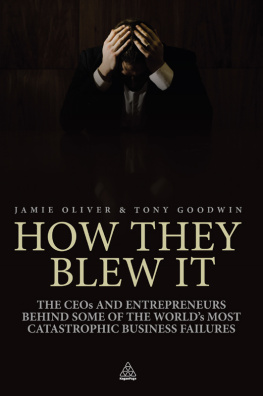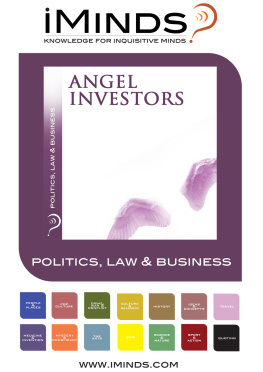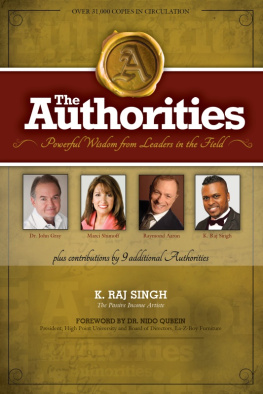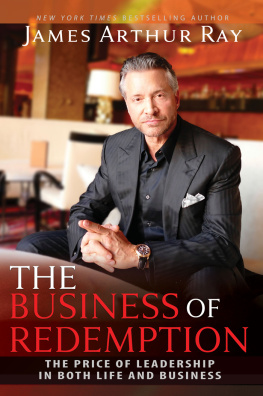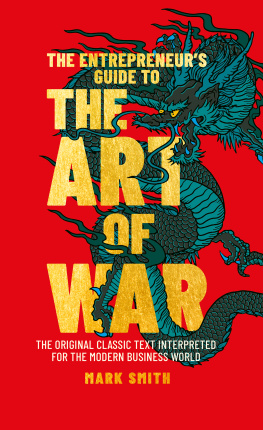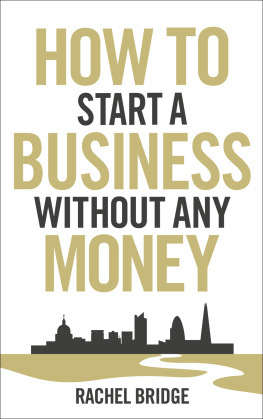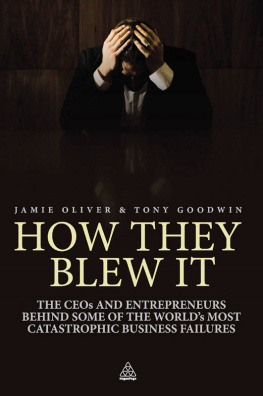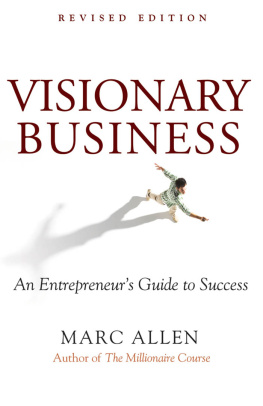The CEOs and entrepreneurs behind some of the worlds most catastrophic business failures
The authors acknowledge that they have drawn on a great many sources to write this narrative, and as it would interrupt the narrative to acknowledge every instance, a list of sources is given at the end of each chapter. |
Publishers note
Every possible effort has been made to ensure that the information contained in this book is accurate at the time of going to press, and the publishers and authors cannot accept responsibility for any errors or omissions, however caused. No responsibility for loss or damage occasioned to any person acting, or refraining from action, as a result of the material in this publication can be accepted by the editor, the publisher or any of the authors.
First published in Great Britain and the United States in 2010 by Kogan Page Limited
Apart from any fair dealing for the purposes of research or private study, or criticism or review, as permitted under the Copyright, Designs and Patents Act 1988, this publication may only be reproduced, stored or transmitted, in any form or by any means, with the prior permission in writing of the publishers, or in the case of reprographic reproduction in accordance with the terms and licences issued by the CLA. Enquiries concerning reproduction outside these terms should be sent to the publishers at the undermentioned addresses:
120 Pentonville Road
London N1 9JN
United Kingdom
www.koganpage.com | 525 South 4th Street, #241
Philadelphia PA 19147
USA | 4737/23 Ansari Road
Daryaganj
New Delhi 110002
India |
Jamie Oliver and Tony Goodwin, 2010
The right of Jamie Oliver and Tony Goodwin to be identified as the authors of this work has been asserted by them in accordance with the Copyright, Designs and Patents Act 1988.
ISBN 978 0 7494 6065 5
E-ISBN 978 0 7494 5965 9
British Library Cataloguing-in-Publication Data
A CIP record for this book is available from the British Library.
Library of Congress Cataloging-in-Publication Data
Oliver, Jamie, 1973
How they blew it : the CEOs and entrepreneurs behind some of the worlds most catastrophic business failures / Jamie Oliver, Tony Goodwin. -- 1st ed.
p. cm.
Includes index.
ISBN 978-0-7494-6065-5 -- ISBN 978-0-7494-5965-9 1. Chief executive officers. 2. Businesspeople. 3. Executive ability. 4. Success in business--Moral and ethical aspects. I. Goodwin, Tony, 1962- II. Title.
HD38.2.O44 2010
338.0922--dc22
2010020221
 | Typeset by Saxon Graphics Ltd, Derby
Printed and bound in Great Britain by
MPG Books Ltd, Bodmin, Cornwall |
eBook by Graphicraft Limited, Hong Kong
Contents
J ournalist Jamie Oliver has written for a number of national newspapers in the United Kingdom, most notably the Financial Times and the Daily Telegraph. He has written for business and consumer magazines in the United Kingdom and beyond, concentrating on entrepreneurship and business. He has interviewed a range of high-flying entrepreneurs over the past 15 years, including Starbucks founder Howard Schultz, Chinese tycoon David Tang and UK advertising guru Martin Sorrell. Hes written about everything from philanthropy to art dealers, blueberries to stuntmen. Researching and writing this book, though, has probably been the most illuminating of all his work to date, teaching him, and he hopes readers, much more about the reality behind business and entrepreneurship than any glossy magazine profile piece.
www.jamieoliverjournalist.com
Tony Goodwin is a successful entrepreneur who has run his own recruitment business for 17 years in territories around the world, from Russia to China, the Middle East to Africa. He has suffered through three major recessions, one of which (between 2001 and 2003) brought his business close to collapse and forced him to seek creditor protection. Since then, Goodwin has ploughed back his life savings and all his worldly assets to save the company. Five years on, he sold his Russian business for many tens of millions of dollars.
He has set up a business, almost lost the lot but come out the other side. The business experiences gives him a particular insight and understanding of what it takes to build an entrepreneurial business and how that business can come close to disaster.
www.antal.com
H ard work, success, wealth, investments, fast cars, country houses, private jets, yachts, pretty wives.
Debt, mounting worries, fear, court proceedings, death threats, bankruptcy, prison, suicide, solitary confinement.
It is a very fine line.
To succeed in business entrepreneurs require courage, they need to be able to take risks, they need a vision, and they must have complete confidence in themselves and their abilities. To fail in business, that courage becomes foolhardiness, the risks become disproportionate, the vision loses focus and the confidence becomes arrogance. And there is not a lot between the two.
This book is about entrepreneurs and the leaders of some of the worlds greatest business failures. It is about how they went from hero to zero and how they managed to blow it in the most spectacular manner possible. And from the failures, this book aims to highlight some of the lessons all entrepreneurs and business leaders can learn.
From unimaginable riches to languishing in a Siberian prison; from heading up one of Wall Streets most successful investment banks to facing stinging criticism from a US House Committee. One way or another, they all blew it. We look at how and why.
This book is about people, about the central human element at the heart of these business catastrophes. It is about entrepreneurs and business leaders, and what drives these people to succeed and then to fail. Often, it is the same thing. And it often ends in tragedy.
Three of the people in this book are dead. Ken Lay had a heart attack and died facing charges surrounding his criminal role in the bankruptcy of the once-mighty Enron Corporation. Adolf Merckle, the German industrialist and multi-billionaire, lost a fortune and stepped in front of a train aged 74. British businessman Christopher Foster killed his dogs, horses, daughter and wife, before setting his house on fire and dying of smoke inhalation. These were tragic ends to incredibly successful careers.
Others in the book sit in prison. Bernie Ebbers from WorldCom, inmate 56022-054, currently resides in the Oakdale Federal Correctional Institution in Oakdale, Louisiana. Russian oligarch Mikhail Khodorkovsky finds himself in a Siberian prison, and Chinese property developer Zhou Zhengyi is also behind bars in Shanghai. Others simply lost vast fortunes. Yet it is never simple.
All sorts of people, friends, family, employees, suppliers and associates will have suffered also at the hands of the 16 men featured in this book. Good news for the lawyers, bad news for everyone else.
Entrepreneurs are many things. They have many admirable, likeable and worthy characteristics. Many of those in this book do or did a lot of good work for charities or society at large. WorldComs Bernie Ebbers taught Sunday school classes in Brookhaven, Mississippi; Guy Naggar supported a series of artistic institutions. Even Dick the gorilla Fuld, more business leader than entrepreneur, of course, was on the board of directors of the Robin Hood Foundation, a charitable organization which tackles poverty in New York City.

